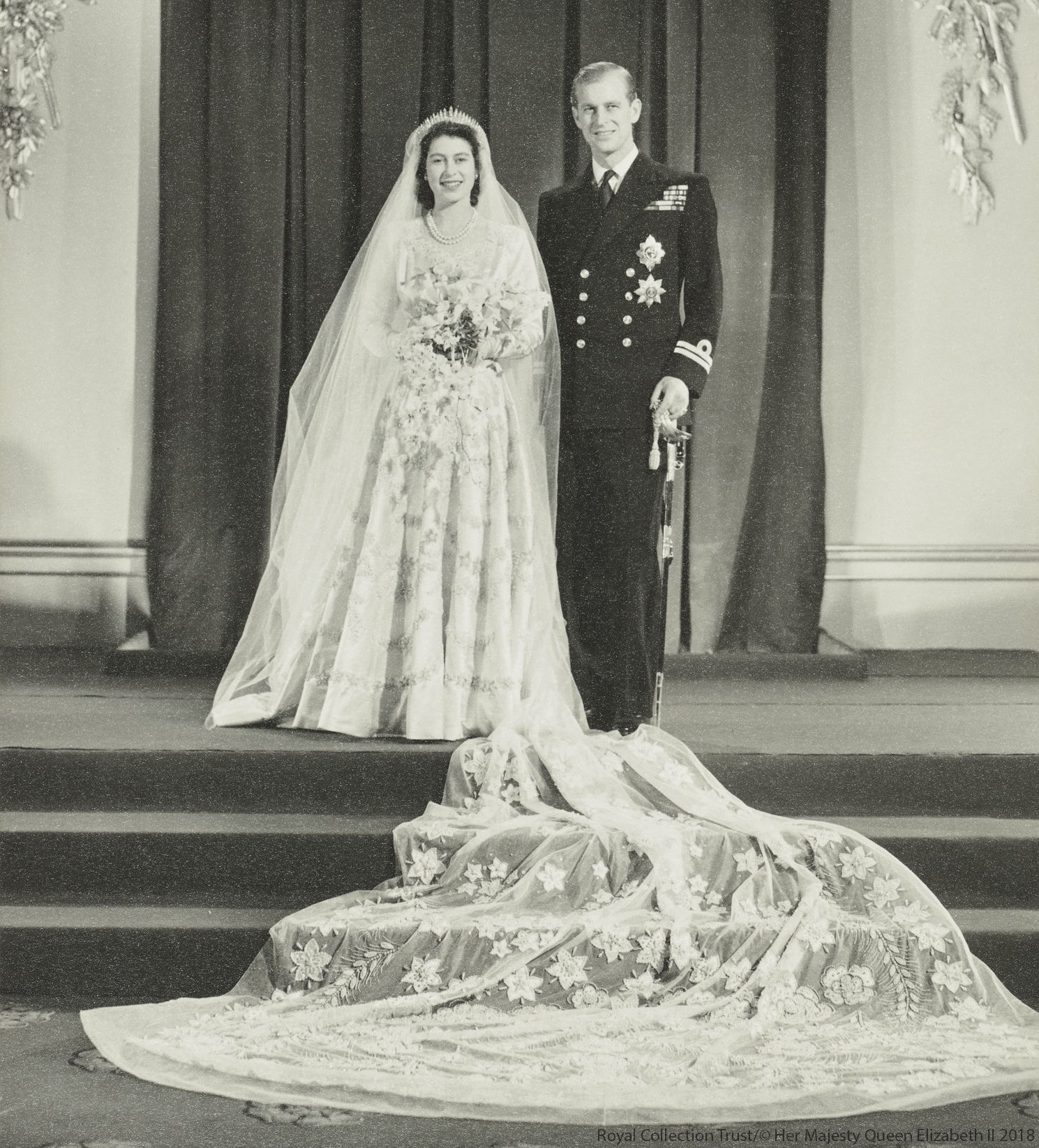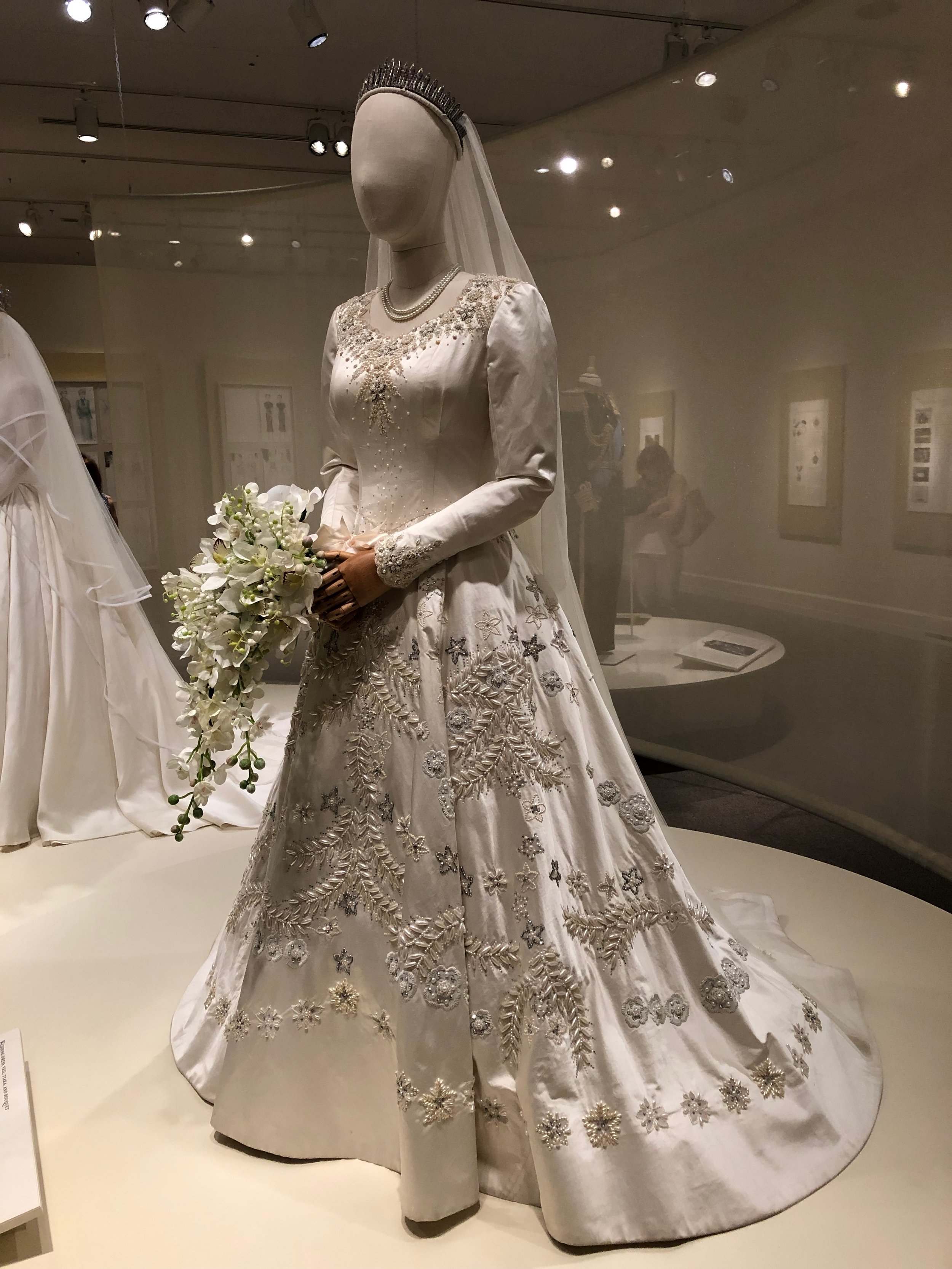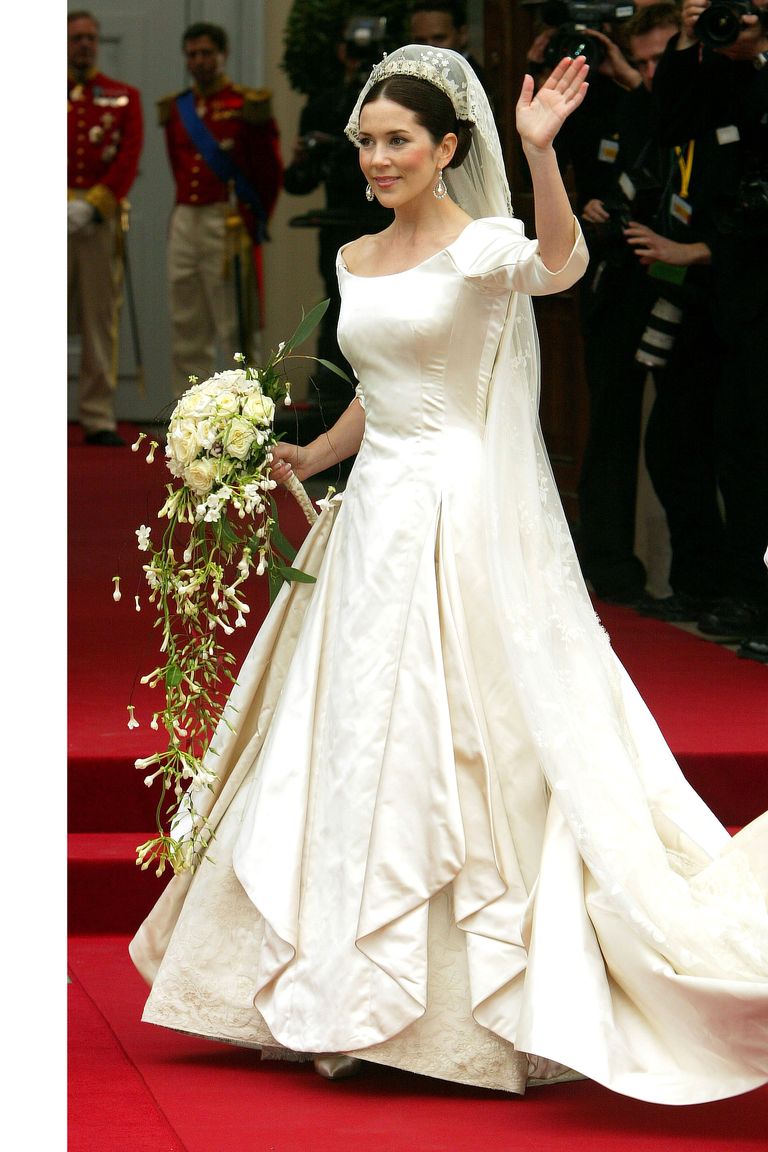Stepping into a royal wedding is, for many, like stepping into a dream, a moment where history and glamour meet in a truly spectacular way. So, it's almost as if every detail, from the grand setting to the smallest adornment, holds a special kind of magic. And, you know, at the very heart of this grand display often sits one thing that captures everyone's imagination: the queen wedding dresses.
These gowns are more than just clothes worn for a special day; they tell stories. They speak of tradition, of personal choices, and of big moments in history. Each dress, in its own way, helps us see a bit of the person wearing it, and what that time was like. They are, in a way, fashion statements that echo through the years, setting trends and sparking conversations that last a long, long time.
As we take a look into the future, perhaps we can also appreciate how these gowns give us a glimpse into the past, influencing what comes next in bridal fashion. We're going to explore some of the most memorable queen wedding dresses, seeing what made them special and how they left their mark. You'll get to see the details, the moments, and the lasting impact of these truly iconic royal looks.
Table of Contents
- Queen Victoria: The Birth of the White Wedding Dress
- Queen Elizabeth II: A Symbol of Post-War Hope
- Grace Kelly: Hollywood Royalty Meets Real Royalty
- Princess Diana: The Fairytale Gown
- Catherine, Princess of Wales: Modern Elegance, Royal Tradition
- Meghan, Duchess of Sussex: A Contemporary Statement
- The Enduring Influence of Royal Styles
- Drawing Inspiration for Your Own Day
- Frequently Asked Questions About Royal Wedding Dresses
Queen Victoria: The Birth of the White Wedding Dress
The year was 1840, and a young Queen Victoria was getting ready to marry Prince Albert. Her choice of dress, quite surprisingly, changed bridal fashion forever. Before her wedding, brides often wore dresses of various colors, often choosing something practical that they could wear again. But Victoria decided on a white satin gown, adorned with a deep lace trim. This was, in fact, a pretty bold choice for the time.
Her dress featured a huge skirt, a fitted bodice, and a long train. The lace, Honiton lace from Devon, was a special touch, meant to support British industries. It was a statement, really, about national pride and personal taste. The choice of white, apparently, was more about showing off the delicate lace than symbolizing purity, though it quickly took on that meaning for many people.
Pictures of Victoria's wedding spread far and wide, thanks to new printing methods. This meant that her white dress became a widely recognized image. Soon enough, brides everywhere wanted to copy her style. This is how, you know, the tradition of the white wedding dress began, a custom that still holds strong today. It truly set a standard for what a wedding dress could be, shaping ideas about bridal fashion for generations.
The dress itself was quite simple by today's royal standards, but its impact was anything but small. It showed how a single choice by a powerful figure could change popular customs. This simple act of choosing white, in some respects, gave rise to a whole new way of thinking about weddings and the clothing worn for them. It was a powerful moment, really, in the story of bridal fashion.
Queen Elizabeth II: A Symbol of Post-War Hope
When Princess Elizabeth, now Queen Elizabeth II, married Prince Philip in 1947, her wedding dress carried a different kind of weight. The world was still recovering from the effects of World War II. Resources were scarce, and times were tough. Her gown, therefore, needed to reflect both royal grandeur and the spirit of a nation rebuilding itself. It was a very significant moment for the country.
Designed by Norman Hartnell, the dress was a beautiful creation of duchesse satin, adorned with thousands of pearls and crystals. It had a star pattern, meant to symbolize hope and rebirth. The embroidery itself was quite detailed, taking many hands to complete. It was, you know, a true work of art, despite the challenges of the time. The materials for the dress were actually purchased using ration coupons, which showed a connection to the everyday struggles of her people.
The gown featured a fitted bodice, a full skirt, and a 13-foot train. Its design drew inspiration from Botticelli's painting "Primavera," which added a touch of artistic grace. The sheer scale of the embroidery and the careful craftsmanship made it a truly special garment. It was, arguably, a dress that spoke volumes without saying a word, signaling a return to beauty and celebration after years of hardship.
This dress was more than just a piece of clothing; it was a public message of optimism. It showed that even in difficult times, there could be moments of joy and splendor. The way it was created, with so much attention to detail and symbolism, truly made it a dress that stood for something bigger. It was a very strong visual representation of a hopeful future for Britain.
Grace Kelly: Hollywood Royalty Meets Real Royalty
Grace Kelly's wedding to Prince Rainier III of Monaco in 1956 was a truly global event, bringing together the glamour of Hollywood with the traditions of European royalty. Her wedding dress, designed by Helen Rose of MGM, was a masterpiece of elegance and fine detail. It was, in fact, a gift from the studio, adding another layer to its story.
The gown featured a high neckline, long sleeves, and a full skirt, all made from exquisite antique lace, silk taffeta, and silk net. The bodice was made from antique Brussels lace, which had been re-embroidered. The skirt had several layers, creating a beautiful silhouette. It was, quite literally, a dress that flowed with grace as she moved, very fitting for someone with her name.
What made this dress so special was its blend of modesty and luxury. It was grand without being over-the-top, classic without being old-fashioned. The delicate lace work and the precise fit gave it a timeless appeal. Many people, even today, consider it one of the most beautiful wedding dresses ever created. It really captured a certain kind of refined beauty.
The wedding itself was broadcast worldwide, letting millions see the dress up close. Its influence was immediate and lasting, inspiring countless brides to seek out similar styles. It showed that a royal dress could be both regal and understated, creating a look that many still try to copy. This gown, you know, set a high bar for bridal elegance for decades to come.
Princess Diana: The Fairytale Gown
The wedding of Prince Charles and Lady Diana Spencer in 1981 was a true fairytale moment for many around the world. Princess Diana's dress, designed by David and Elizabeth Emanuel, was exactly what people expected from a royal wedding of that scale. It was, honestly, a dress that seemed to come straight out of a storybook.
The gown was famous for its huge puffed sleeves, a very full skirt, and an incredibly long train, measuring 25 feet. It was made from ivory silk taffeta and adorned with over 10,000 pearls and sequins. The fabric was specially woven for the occasion, adding to its unique nature. The sheer volume of the dress was, quite frankly, astonishing, making a big statement as she walked down the aisle.
The design also included antique lace, which had once belonged to Queen Mary. This detail added a historical connection to the dress. The dress had a small blue bow sewn into the waistband for "something blue," a charming, personal touch. It was, in a way, a blend of grand tradition and youthful charm, reflecting Diana's own public persona.
Diana's wedding dress became one of the most famous dresses in history. Its dramatic silhouette and romantic details set trends for years, influencing bridal fashion throughout the 1980s. Many brides wanted that same grand, romantic look for their own weddings. It truly showed, you know, the power of a single dress to capture the public's imagination and shape an entire era of fashion.
Catherine, Princess of Wales: Modern Elegance, Royal Tradition
When Catherine Middleton married Prince William in 2011, her wedding dress was eagerly awaited by millions. Designed by Sarah Burton for Alexander McQueen, the gown managed to blend classic royal tradition with a fresh, modern feel. It was, basically, a dress that honored the past while looking firmly towards the present.
The dress featured a lace bodice with long sleeves, a full skirt, and a modest V-neckline. The lace was incredibly intricate, made from individual floral motifs cut from lace and then hand-stitched onto ivory silk tulle. The design included roses, thistles, daffodils, and shamrocks, representing the four nations of the United Kingdom. This attention to detail was, frankly, quite something.
The gown's silhouette was inspired by Victorian corsetry, but with a contemporary lightness. The train was a respectable 9 feet long, long enough to be regal but not so long as to be overwhelming. The balance between tradition and modernity was key to its appeal. It was, you know, a dress that felt both grand and approachable at the same time.
Catherine's dress received wide praise for its elegance and timelessness. It inspired a new wave of bridal designs, particularly those featuring lace sleeves and classic shapes. Her choice showed that a royal wedding dress could be both sophisticated and widely appealing, setting a tone for future royal brides. It really cemented her place as a style icon, too it's almost a given.
Meghan, Duchess of Sussex: A Contemporary Statement
Meghan Markle's wedding to Prince Harry in 2018 brought a different kind of royal wedding dress to the forefront. Her gown, designed by Clare Waight Keller for Givenchy, was a striking departure from previous royal bridal styles. It was, in some respects, a very bold and contemporary choice that spoke to her personal style.
The dress was notable for its sleek, minimalist design. It featured a boat neckline, three-quarter length sleeves, and a simple, flowing skirt with a modest train. The fabric was a pure white double-bonded silk cady, chosen for its soft texture and beautiful drape. The clean lines of the dress were, quite simply, stunning, letting the fabric speak for itself.
The only significant embellishment was the veil, which was truly a showstopper. It was made from silk tulle and hand-embroidered with flowers representing all 53 Commonwealth countries, along with a California poppy and wintersweet, her home state flower and a flower that grows at Kensington Palace. This detail, you know, added a deep personal and symbolic layer to the otherwise simple gown.
Meghan's choice of a minimalist dress sent a clear message about modern royal style. It showed that elegance doesn't always need lots of sparkle or volume. Her gown influenced designers to create more understated, clean-lined bridal looks. It was, basically, a refreshing take on what a royal wedding dress could be, showing that simplicity can be just as impactful as grandeur.
The Enduring Influence of Royal Styles
The impact of queen wedding dresses goes far beyond the wedding day itself. These gowns have a remarkable power to shape fashion trends, inspire designers, and even influence what everyday brides choose to wear. They are, in fact, like living history lessons, showing us how styles change and how certain looks become timeless.
From Queen Victoria's white gown setting a tradition that lasts to this very day, to Princess Diana's grand fairytale dress defining an era, each royal bride leaves a mark. Catherine's lace sleeves and Meghan's clean lines have, you know, certainly found their way into bridal collections worldwide. It's a fascinating cycle of inspiration and interpretation.
Designers often look to these historical gowns for ideas, perhaps taking a detail here or a silhouette there. Brides, too, often refer to royal wedding photos when thinking about their own dresses, looking for that touch of regal elegance. It’s a very real connection between history and personal dreams, showing how powerful these images are.
These dresses also reflect the times they were worn in. Queen Elizabeth II's dress, for example, spoke of post-war hope, while Meghan's dress reflected a more contemporary, global outlook. They are, you see, more than just pretty clothes; they are cultural touchstones that tell us a lot about society and its values at a given moment. This makes them, in some respects, truly special objects.
Drawing Inspiration for Your Own Day
You don't need a crown or a castle to bring a touch of royal elegance to your own wedding day. The beauty of these queen wedding dresses is that their core elements can be adapted to fit any bride's vision and budget. There are, actually, many ways to take inspiration from these iconic looks.
Think about the details you admire most. Is it the intricate lace of Catherine's gown? Or perhaps the simple, elegant lines of Meghan's dress? Maybe you love the dramatic silhouette of Diana's fairytale look. Focusing on one or two key elements can help you find a dress that feels royal, but also uniquely yours. It’s about, you know, finding what speaks to you.
Consider fabrics like silk, satin, or delicate lace for a luxurious feel. Look for classic necklines, like a boat neck or a high collar, if you like that traditional royal look. Sleeves, whether long and lacy or simple and fitted, can add a lot of grace. Even a carefully chosen veil can make a big difference, giving a nod to royal tradition without being an exact copy.
Remember, the goal is to feel like a queen on your special day, whatever that means to you. It's about confidence, elegance, and choosing something that makes you feel wonderful. Just as we accept our students with their abilities and skills and help them acquire further necessary competencies for their future, finding your perfect dress is about recognizing your own style and letting it shine. So, take your time, explore different options, and find what truly makes you happy.
Frequently Asked Questions About Royal Wedding Dresses
What makes a queen's wedding dress different from other bridal gowns?
Royal wedding dresses often have a unique blend of historical significance, national symbolism, and high-end design. They are usually custom-made by renowned designers, often feature very rich fabrics, and include intricate details like hand-sewn lace or embroidery. They also, you know, tend to be very carefully preserved and become part of history.
How do royal wedding dresses influence fashion trends?
Royal wedding dresses have a huge impact because they are seen by so many people around the world. When a royal bride wears a certain style, like a white dress, lace sleeves, or a simple silhouette, designers and brides quickly pick up on it. This can, in fact, start or reinforce major trends in the bridal fashion world for years afterwards. It's a very powerful kind of influence.
Which royal wedding dress is considered the most iconic?
While many royal wedding dresses are memorable, Princess Diana's gown from 1981 is very often named as one of the most iconic. Its dramatic size, fairytale look, and the sheer scale of the wedding itself made it unforgettable. It really captured the imagination of people everywhere, and, you know, it's still talked about a lot today.
Explore more about royal traditions and fashion on our site, and link to this page for more bridal inspiration.



Detail Author:
- Name : Gabriel Satterfield
- Username : jackson54
- Email : ueffertz@yahoo.com
- Birthdate : 1987-10-15
- Address : 58797 Anderson Parks Apt. 432 Melyssaborough, PA 30681-5649
- Phone : +1 (815) 634-2197
- Company : Krajcik-Thiel
- Job : Protective Service Worker
- Bio : Voluptas sint beatae sunt sit. Aperiam ducimus natus quas architecto. Qui possimus ex velit voluptates velit praesentium qui.
Socials
instagram:
- url : https://instagram.com/zachary4538
- username : zachary4538
- bio : Aspernatur maiores aut molestiae officiis vero. Omnis ullam qui quae.
- followers : 2031
- following : 417
twitter:
- url : https://twitter.com/zachary_id
- username : zachary_id
- bio : Voluptatibus qui impedit sit ipsum aspernatur laborum. Odio quis enim eveniet praesentium sed. Et earum ea est ad suscipit animi.
- followers : 3522
- following : 2295